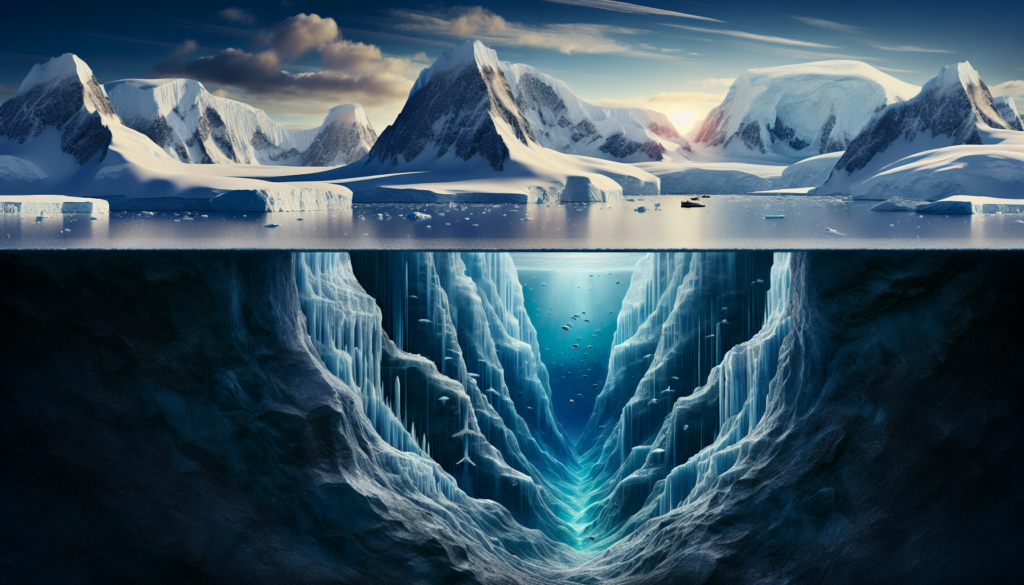Contents
Antarctica, often dubbed the "White Continent," is renowned for its extreme cold, vast ice sheets, and desolate landscapes. Yet, beneath its icy surface lies a world of hidden lakes that have remained concealed for millennia. These subglacial lakes are reshaping our understanding of the continent’s geology, climate history, and potential for extraterrestrial life.
A Mysterious Underworld
The Discovery of Subglacial Lakes
Subglacial lakes were first identified in the mid-20th century through radar surveys and satellite imaging. Since then, more than 400 of these hidden reservoirs have been discovered, lurking beneath kilometers of solid ice. The largest and most well-known is Lake Vostok, which spans approximately 250 km in length and 50 km in width.
How Do These Lakes Form?
Contrary to what one might expect, the formation of subglacial lakes is a result of geothermal heat emanating from the Earth’s core. This heat melts the ice from below, while pressure from the immense ice sheet above prevents the water from freezing, thus creating liquid lakes.
Isolation and Its Implications
These lakes have been isolated for millions of years, cut off from any external contact. This makes them uniquely preserved time capsules, potentially holding ancient microbial life forms that have evolved independently of the rest of the world.
Scientific Significance
Clues to Earth’s Past Climate
The sediments in these lakes can provide a climate record that goes back hundreds of thousands of years. By analyzing these sediments, scientists can reconstruct past atmospheric conditions, shedding light on the climate patterns that have shaped our planet.
Biological Discoveries
Exploring these lakes isn’t just about understanding geography and climate; it’s also about discovering new forms of life. Microbes found in the subglacial lakes are adapted to extreme conditions—low temperatures, high pressures, and lack of sunlight—making them analogous to life that might exist on other celestial bodies like Jupiter’s moon Europa or Saturn’s moon Enceladus.
Technological Advances
Researching these hidden lakes has driven technological innovation. Specialized drilling equipment, contamination-free sampling techniques, and advanced remote sensing technologies have been developed to study these inaccessible environments.
Challenges
Harsh Conditions
The extreme cold and isolation of Antarctica make expeditions to these lakes incredibly challenging. Researchers have to work in harsh conditions, and the logistics of transporting equipment and maintaining operations can be daunting.
Environmental Concerns
There’s also a critical need to avoid contaminating these pristine environments. Strict protocols are in place to ensure that the introduction of foreign materials and organisms is minimized, preserving the integrity of these unique ecosystems.
Political and Legal Barriers
The Antarctic Treaty System governs the activities that can be pursued on the continent. The environmental protection protocols under this treaty impose stringent regulations to ensure that research activities do not harm the continent’s ecosystems.
The Future of Subglacial Lake Research
With advances in technology and international collaboration, the study of Antarctica’s hidden lakes is poised to uncover even more groundbreaking discoveries. Future missions could provide unprecedented insights into Earth’s climatic history, biodiversity, and even the potential habitability of other planetary bodies.
Explorations beneath Antarctica’s ice may be challenging, but the rewards are immense. Each discovery provides a new piece of the puzzle, helping us understand not only our planet’s past and present but also whether life could thrive in some of the most extreme environments in the universe.
These hidden lakes beneath the ice aren’t just scientific curiosities; they are windows into a world long lost to time, waiting to reveal their secrets.

